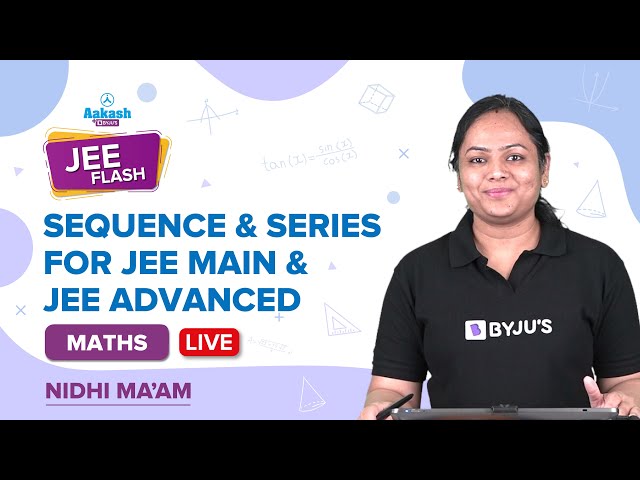An arithmetico geometric series is obtained by term-by-term multiplication of a GP with the corresponding terms of an AP. The general term of an arithmetico geometric series is given by:
For example, the sequence 1 + 3x + 6 x2 + 9 x3 + 12 x4 + 15 x5 + 18 x6 is an arithmetico geometric sequence where the sequence 1 + 3 + 6 + 9 + 12 + 15 + 18 is in arithmetic progression and the sequence 1 + x + x2 + x3 + x4 + x5 + x6 is in geometric progression.
The Sum of n Terms of an Arithmetico Geometric Series
Now, multiplying the above equation by ‘r’, we get
Now, Equation (2) – Equation (1), we get
Or
Or,
The Sum of an Infinite Arithmetico Geometric Series
If n → ∞, and |r| < 1, then rn = 0.
Therefore,
The Method of Differences:
Suppose p1, p2, p3, p4,…., pn is a given sequence such that (p2 – p1), (p3 – p2),…., (pn – pn-1) is either in an arithmetic or geometric progression. The sum of the given sequence can be evaluated by the steps mentioned below:
- Finding the nth term of the given sequence (tn):
Let,
Also,
Now, Equation (1) – Equation (2), we get;
Or,
- Evaluating the sum of the given sequence using its nth term:
Important Results
- \(\begin{array}{l}\mathbf{\sum_{r\;=\;1}^{n}\;\;(a_{r}\;\pm \;b_{r})\;=\;\sum_{r\;=\;1}^{n}\;a_{r}\;\pm \;\sum_{r\;=\;1}^{n}\;b^{r}}\end{array} \)
- \(\begin{array}{l}\mathbf{\sum_{r\;=\;1}^{n}\;\;k\;a_{r}\;=\;k\;\sum_{r\;=\;1}^{n}\;a_{r}}\end{array} \)
- \(\begin{array}{l}\mathbf{\sum_{r\;=\;1}^{n}\;\;k\;+\;k\;+\;k\;+\;k\;+\;.\;.\;.\;.\;.\;.\;+\;n\; times\;=\;n\;k}\end{array} \)[ where, k = constant ]
- \(\begin{array}{l}\mathbf{\sum_{r\;=\;1}^{n}\;\;r\;=\;1\;+\;2\;+\;3\;+\;4\;+\;5\;+\;.\;.\;.\;.\;.\;+\;n\;=\;\frac{n\;(n\;+\;1)}{2}}\end{array} \)
- \(\begin{array}{l}\mathbf{\sum_{r\;=\;1}^{n}\;\;r^{2}\;=\;1^{2}\;+\;2^{2}\;+\;3^{2}\;+\;.\;.\;.\;+\;n^{2}\;=\;\frac{n\;(n\;+\;1)\;(2\;n\;+\;1)}{6}}\end{array} \)
- \(\begin{array}{l}\mathbf{\sum_{r\;=\;1}^{n}\;\;r^{3}\;=\;1^{3}\;+\;2^{3}\;+\;3^{3}\;+\;.\;.\;.\;+\;n^{3}\;=\;\frac{n^{2}\;(n\;+\;1)^{2}}{4}}\end{array} \)
Video Lessons
Sequence and Series

Sequence and Series – Revision

Comments